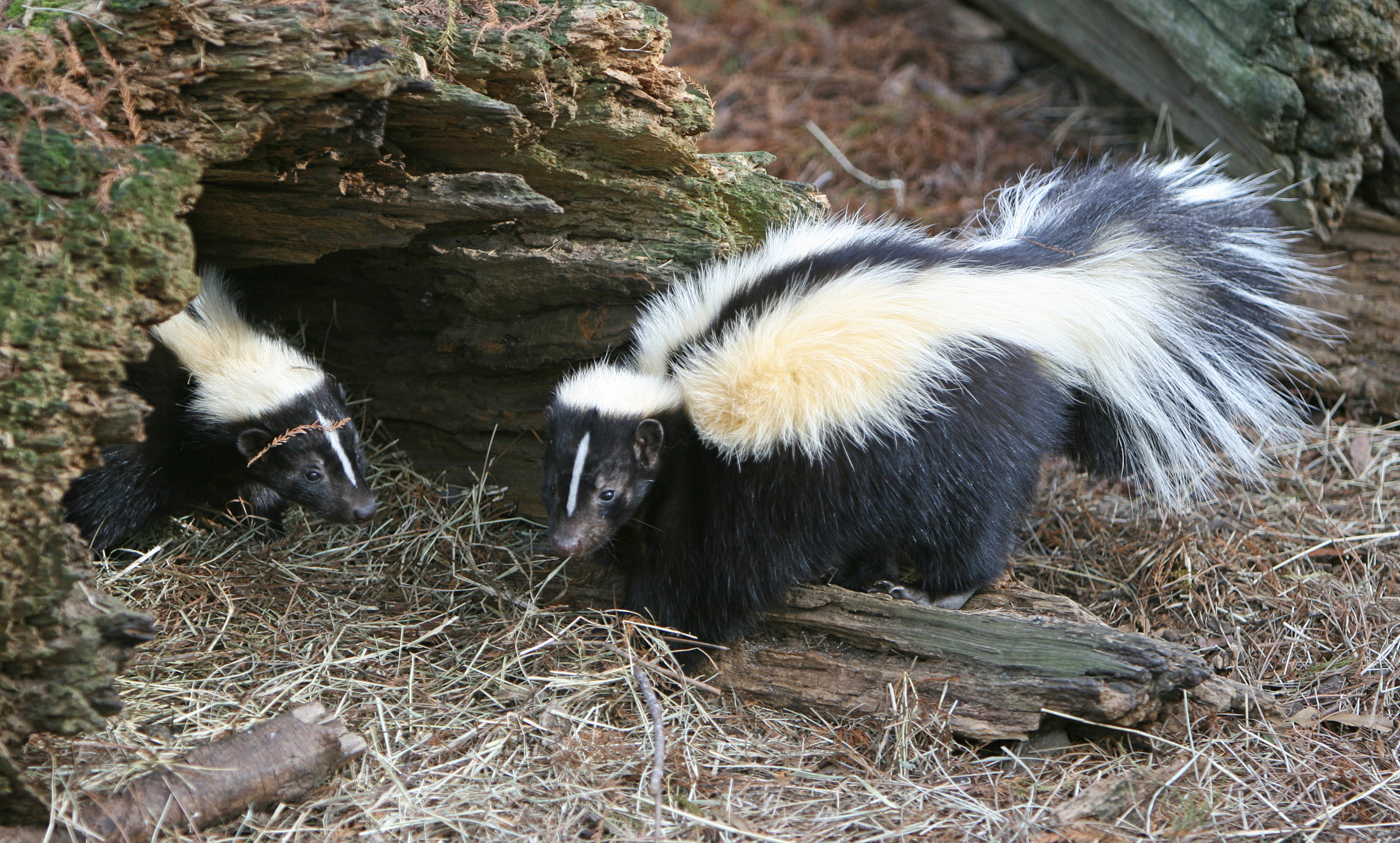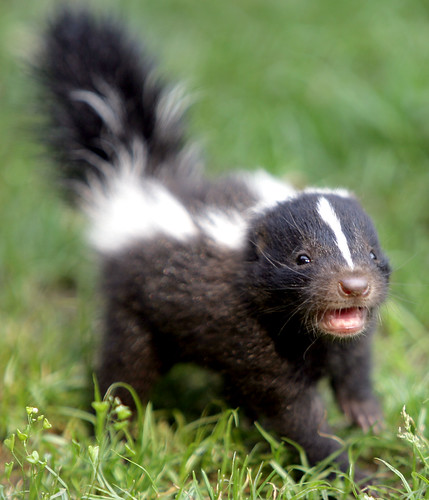Although the most common fur color is black and white, some skunks are brown or grey, and a few are cream-colored. All skunks are striped, even from birth. They may have a single thick stripe across back and tail, two thinner stripes, or a series of white spots and broken stripes (in the case of the spotted skunk). Some also have stripes on their legs.

free downloading pics of skunk weed gallery

latest videos of stipped skunk habitat

different types of animals youtube

cute animals of baby skunk hair wiki

african animals of skunk spraying poster
Skunks are omnivorous, eating both plant and animal material and changing their diet as the seasons change. They eat insects and larvae, earthworms, small rodents, lizards, salamanders, frogs, snakes, birds, moles, and eggs. They also commonly eat berries, roots, leaves, grasses, fungi, and nuts.In settled areas, skunks also seek human garbage. Less often, skunks may be found acting as scavengers, eating bird and rodent carcasses left by cats or other animals. Pet owners, particularly those of cats, may experience a skunk finding its way into a garage or basement where pet food is kept. Skunks commonly dig holes in lawns in search of grubs and worms.
Skunks are one of the primary predators of the honeybee, relying on their thick fur to protect them from stings. The skunk scratches at the front of the beehive and eats the guard bees that come out to investigate. Mother skunks are known to teach this to their young,they shelter in burrows that they dig with their powerful front claws, or in other man-made or natural hollows as the opportunity arises. Both genders occupy overlapping home ranges through the greater part of the year; typically 2 to 4 square kilometres (0.77 to 1.5 sq mi) for females, up to 20 square kilometres (7.7 sq mi) for males.for more images...
No comments:
Post a Comment